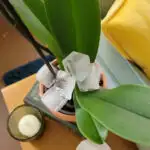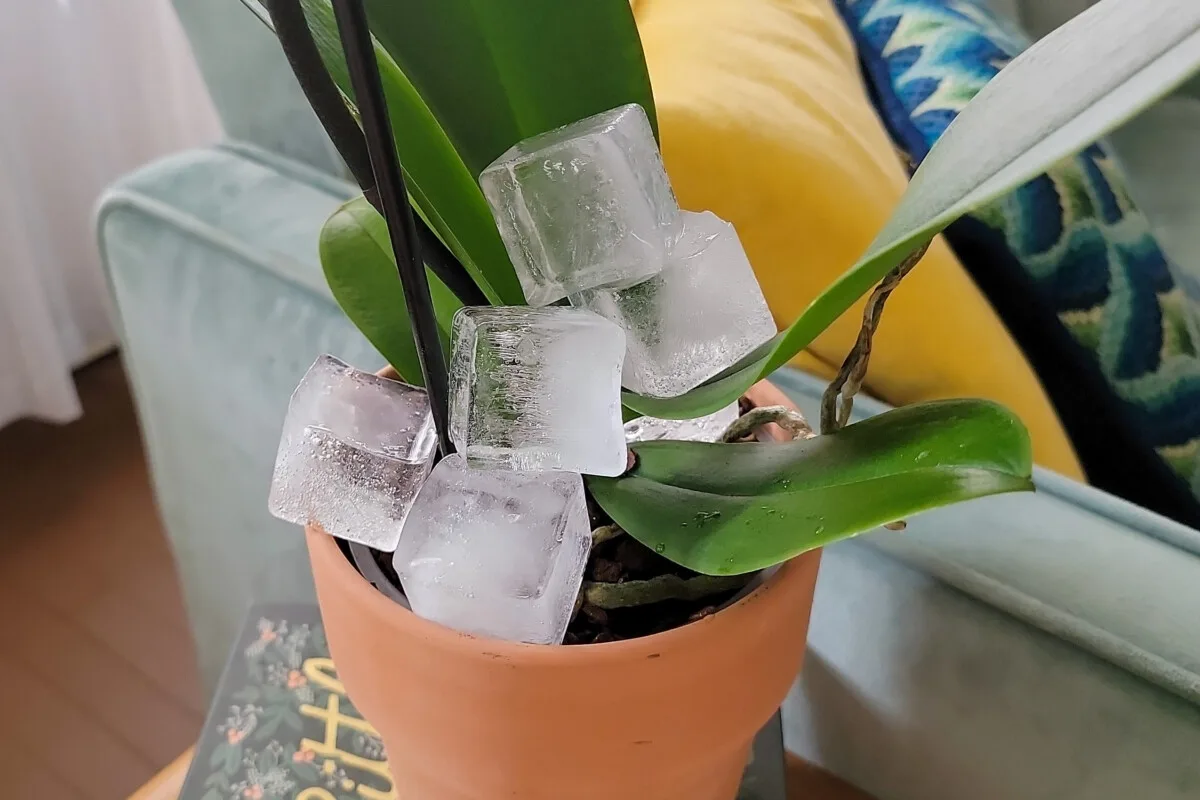
Spend any time in plant-related corners of the internet, and you will stumble across the great orchid ice cube debate. Of course, I’m talking about the practice of watering orchids using ice cubes. For some reason, this has become a hot-button topic in the plant community.
Saying you water your orchid with ice cubes is akin to announcing your radical political views during Thanksgiving dinner.
But rather than filling Reddit with another angry thread or posting more silly memes on the topic, I thought we’d look at whether or not using ice cubes to water orchids is, in fact, such a terrible idea. It’s time to put this thing to bed once and for all.
How it Started – How it’s Going
To understand how this whole thing started, we need to go back before the current houseplant craze.
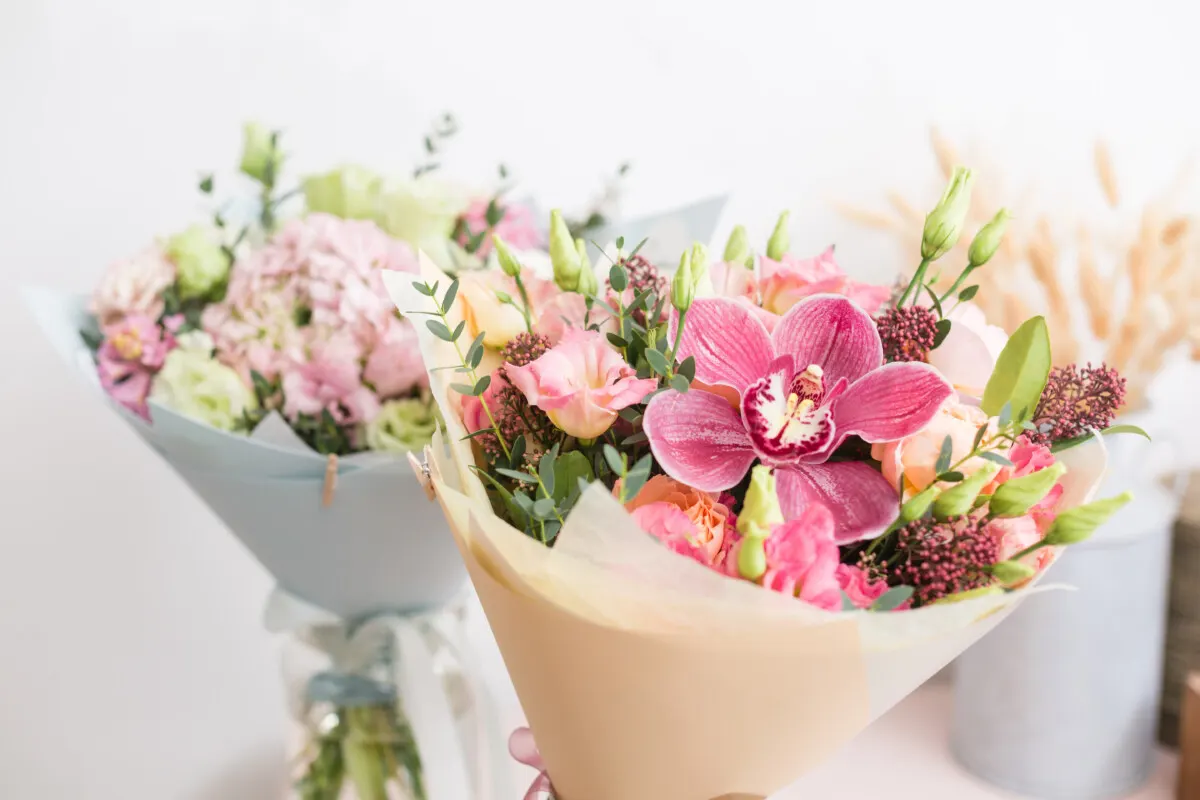
Until the 1960s, commercial orchid breeding was aimed more toward the cut-flower industry than the houseplant owner.
Mass-producing orchids for houseplants wasn’t even a thing at that point. They were very much a plant for the eccentric hobbyist. You were more likely to acquire one from someone who specifically bred orchids rather than buying one in a nursery or garden center.
It’s hard to imagine when you can find them everywhere now, even in grocery stores.
Obviously, the breeding stock and protocols needed to mass-produce orchids for the cut-flower industry (which only cares about the flowers and the stem) will be vastly different than what you need to mass-produce orchids to be sold as a houseplant. It took the combined research of many scientists from all over the world, from the ’70s well into the ’90s, for a reliable mass-produced phalaenopsis to come to the market and reach retailers alive and well. (R.J. Griesbach, 2002)
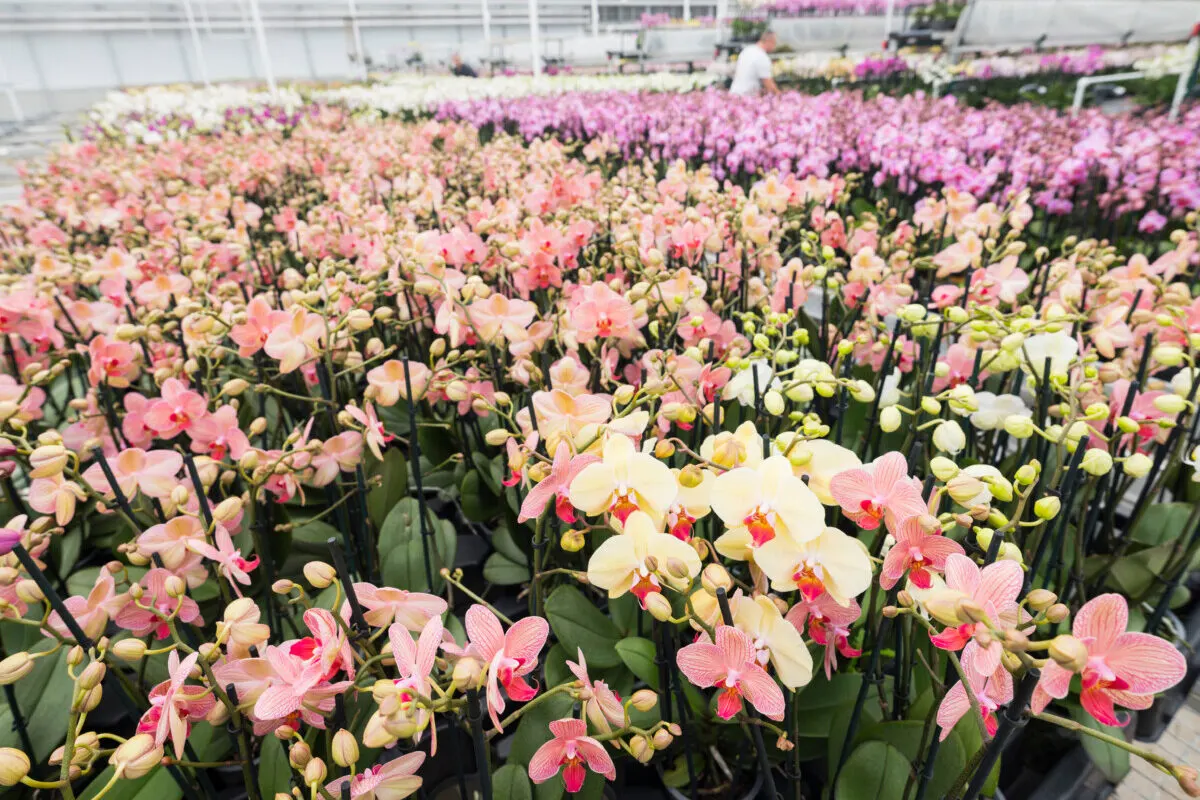
Unfortunately, the orchids didn’t stay that way once the consumer brought them home.
Orchids are quite unlike most houseplants. They don’t need soil. They need very little water, but they need it consistently. Naturally, we, the consumers, got really good at killing orchids really fast by overwatering them. So, growers provided the ice cube tip in their orchid care information that came with the plants to make purchasing an orchid less intimidating. You see, watering orchids with ice cubes is an old trade show trick used to freshen up plants.
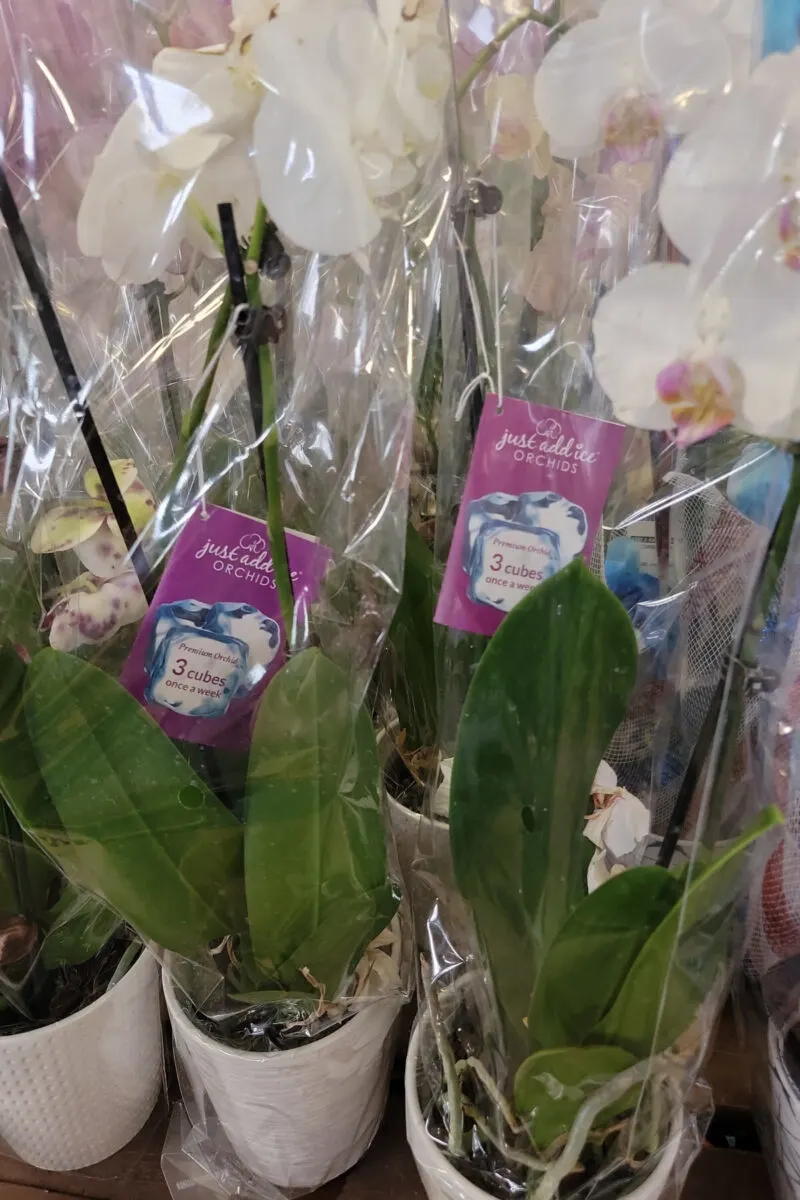
Fast forward to the current houseplant boom.
Now, we have the internet. Now, we can learn about the native habitat and growth of our favorite houseplants with a quick Google search. Most of us who collect plants are much more knowledgeable about plant care these days. So, people started questioning this advice.
“Huh, should we really be subjecting a tropical epiphyte to frigid water? Won’t that damage the roots/leaves/flowers?”
And you know how things go on the internet; righteous indignation kicks in, and the meme wars have started.
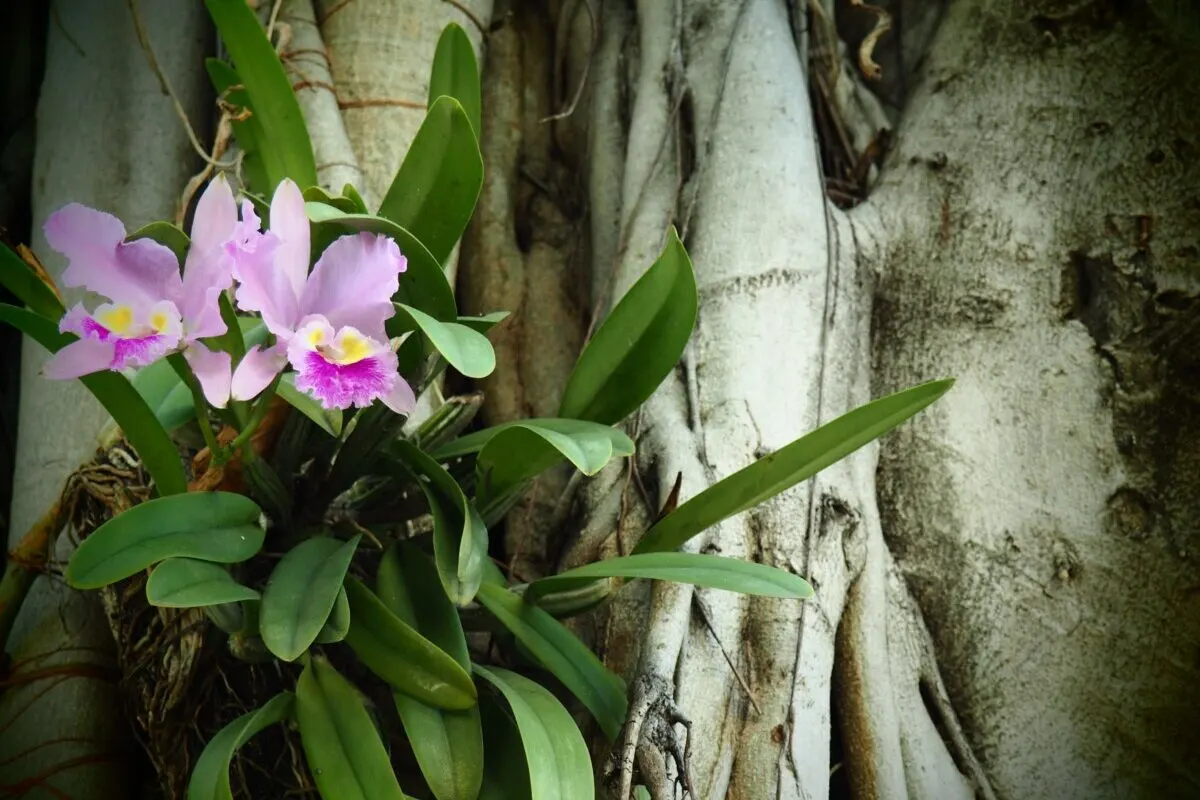
Ohio & Georgia Put it to the Test
Back in 2016, the Ohio State University and the University of Georgia decided to put the ice cube debate to the ultimate test – empirical evidence.
These two universities conducted several experiments, growing Phalaenopsis orchids over a period of six months to determine whether or not watering the plants via ice cubes led to shorter flower life, a decrease in photosynthetic efficiency or cold damage to the roots of the plant.
You can read the full, boring, published study here, and if you are a huge nerd like me, I know you will. But for the rest of you cool kids, here are the Cliff Notes.
Between the two universities, they tested 48 plants comprising four different cultivars of Phalaenopsis.
They set them up in “home-like” conditions with lighting and temperature similar to the average home or office. The ice cube method of irrigation was the experiment, and as a control, they watered the other plants with the same amount of room temperature tap water.
Under these conditions, they performed three separate experiments.
“Experiment 1. Evaluating the effects of ice cube irrigation on the quality and display life of potted Phalaenopsis orchids.”
“Experiment 2. Identifying the temperature at which the photosynthetic apparatus in orchid roots is damaged.”
“Experiment 3. Determining the internal temperature of orchid roots in contact with an ice cube.”
HortScience, Sept. 2017
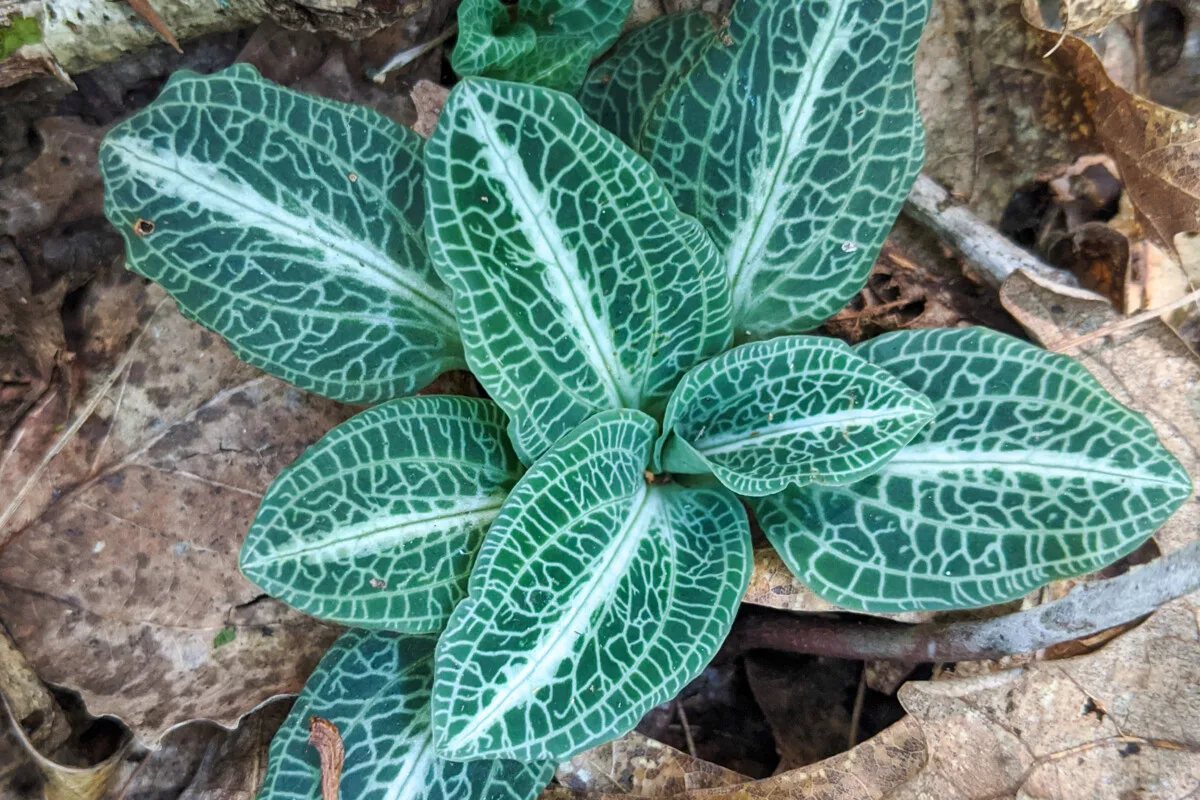
Okay, to paraphrase…
For experiment number one, they watered some orchids with tap water and others with ice cubes and measured things like how much water leached out of the bottom of the pots, the temperature of the bark the plants were potted in after being watered, and how long it took for the potting media to return to room temperature.
At the end of the experiment, they found that (except for one specific cultivar) plants watered via ice cubes had less water leach out of the pot, the coldest the potting media got at any time was 11C (51F), and the potting media returned to room temperature within five hours of the ice irrigation. Watering with ice cubes had no effect on the flowers or leaves of the plant.
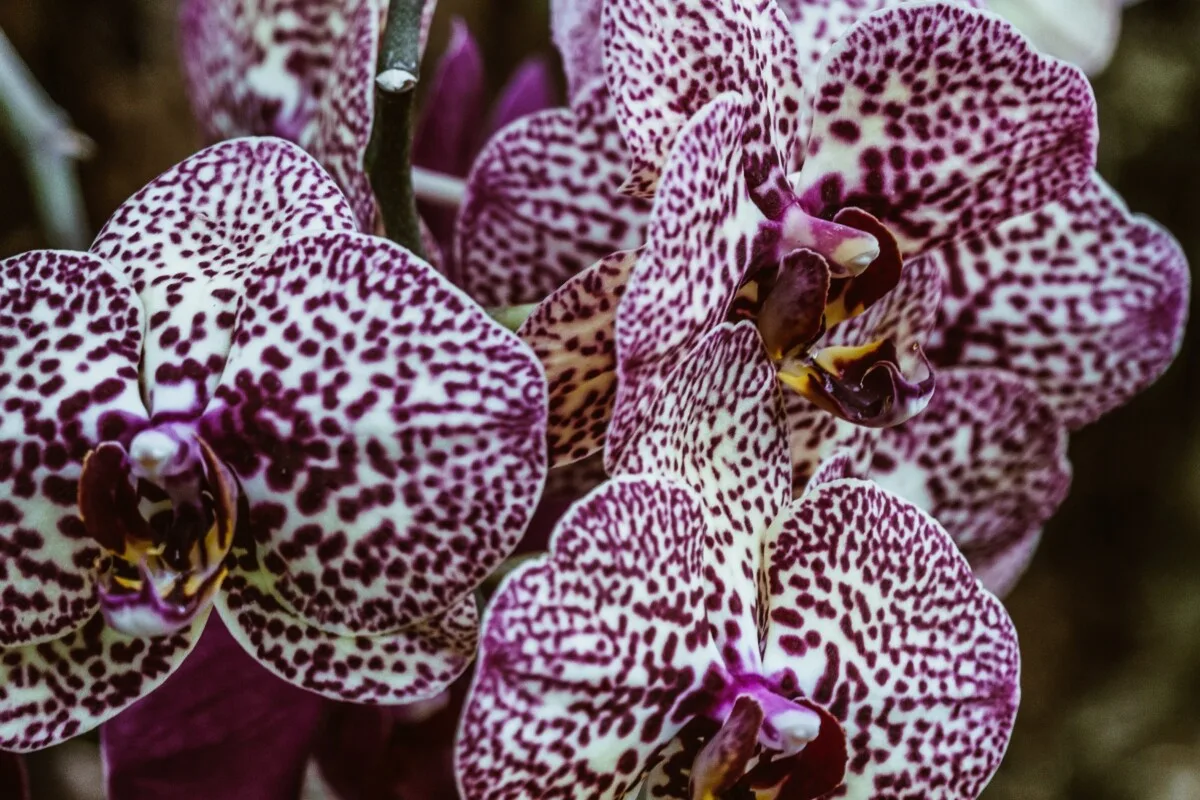
Experiment number two involved removing portions of aerial roots, wrapping them in cheesecloth and putting them in a sealed test tube. The test tubes were placed in an antifreeze bath. Then, the temperature of the root was monitored, as well as photosynthetic activity. The temperature started at 5C (41F) and was lowered by 2C (35.6F) every hour. The result was that photosynthetic activity dropped off rapidly when the antifreeze bath reached -7C (19F).
The third experiment involved inserting tiny thermocouples into the core of an orchid root and monitoring the temperature while it was in direct contact with a melting ice cube. The lowest internal root temperature recorded was 3.1C (37F).
The Conclusion
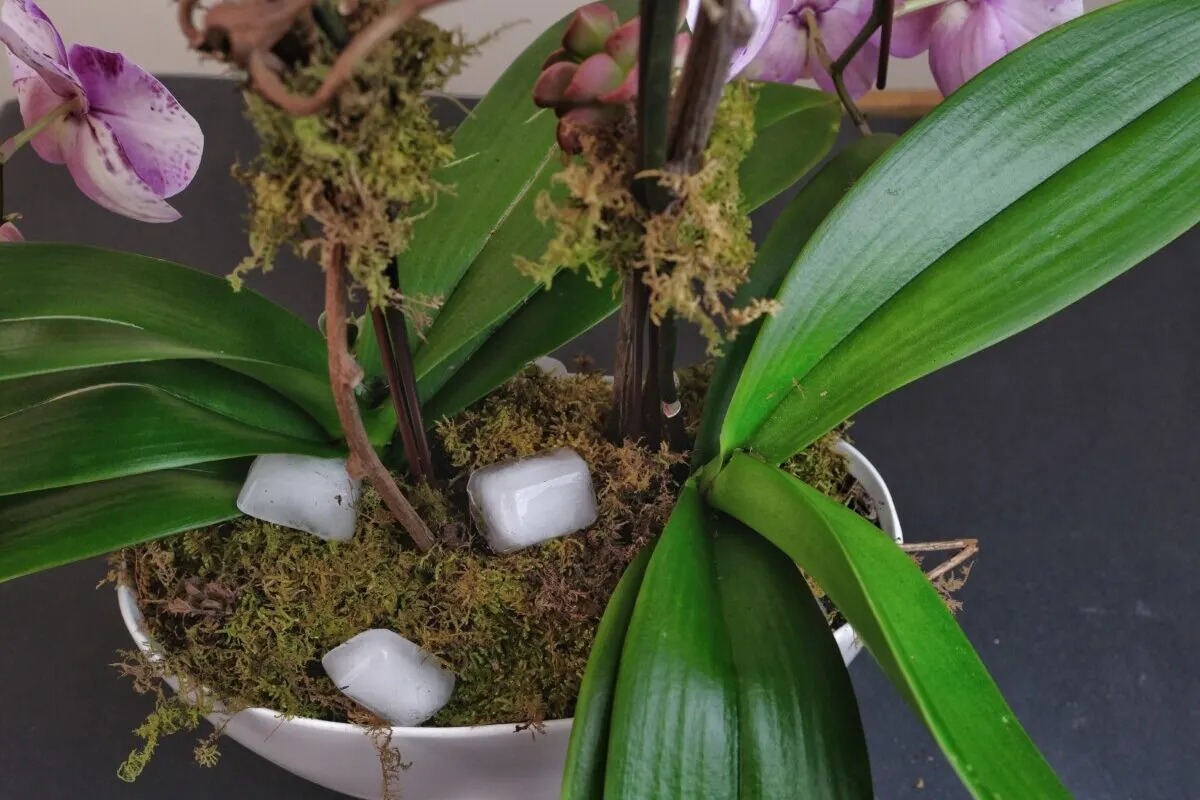
Ultimately, the researchers concluded that watering orchids with ice cubes did not affect the plant’s or the flower’s overall health and that it’s a sensible way for owners to care for their orchids.
You can put two and two together yourself.
When using ice cubes, the potting media only reached around 50F before it started warming up again. The experiment testing for chill damage reached temperatures around 19F before photosynthesis dropped off.
But…
By all accounts, I agree with the study. A lot of fuss has been made over this despite the evidence of thousands of orchid owners who have successfully grown orchids and watered them with ice cubes for ages.
However, there are a few caveats and things you should take care to avoid if you’re going to water your orchids with ice cubes.
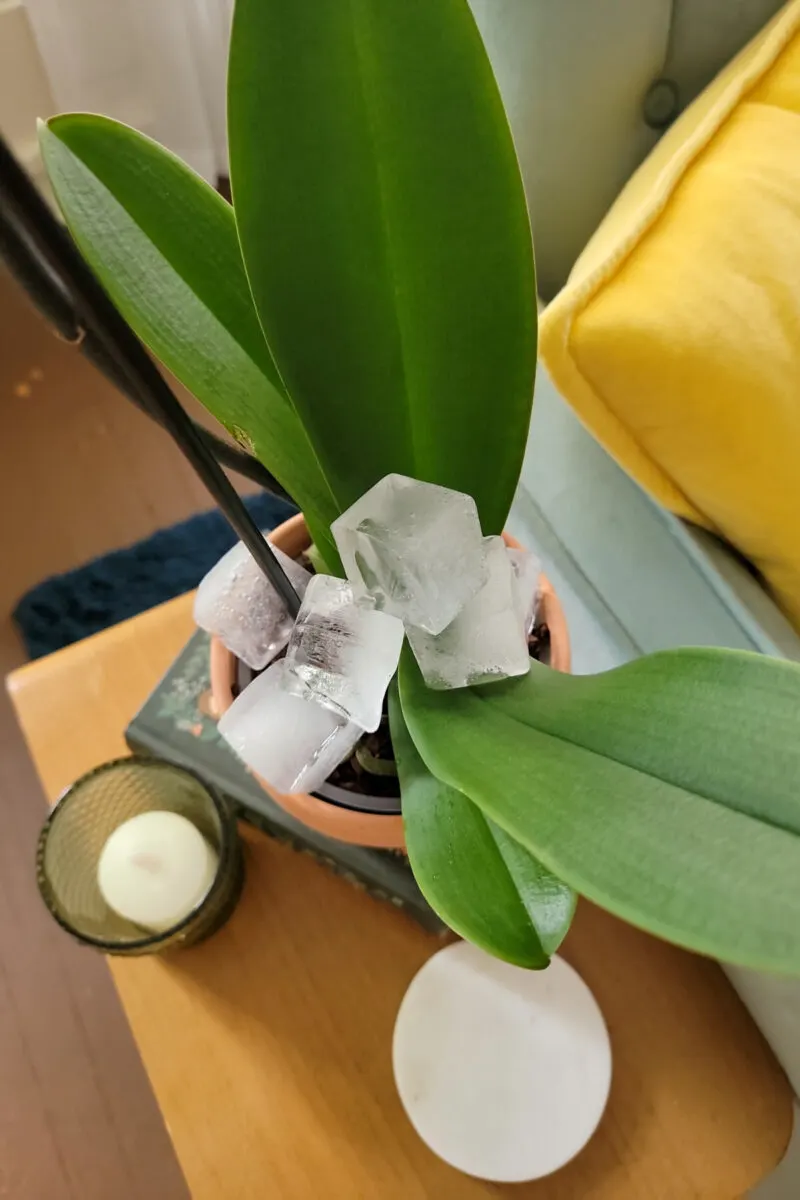
- Different species have different water requirements. The orchids studied were Phalaenopsis because these are by far the most common orchids. These are what you see, well, everywhere. If you’re growing a different type of orchid, this method may not work.
- We all have different ice cube trays. You’ll need to carefully experiment with the number of ice cubes and the frequency to ensure your orchid receives the right amount of water. And remember, water requirements change based on the season. Warmer months may require more frequent watering and more volume than cooler months.
- Everyone is so worried about cold damage to the roots. Those roots are pretty tough; they’re meant to be; they climb and cling to trees. Aerial roots are covered in a layer of dead cells called velamen. I would imagine this helps insulate the inner portion when watering with ice cubes.
- The roots are one thing, but the leaves are another. Be careful not to place ice cubes against the leaves, as it will damage the leaves and fast.
- It’s important to dump out any standing water in the pot once the ice cubes have melted; this is where you can get into trouble with the roots.
- If you can not stand the thought of putting ice cubes on your precious orchid, don’t. If you have a routine that keeps your plant happy, keep at it.
And finally
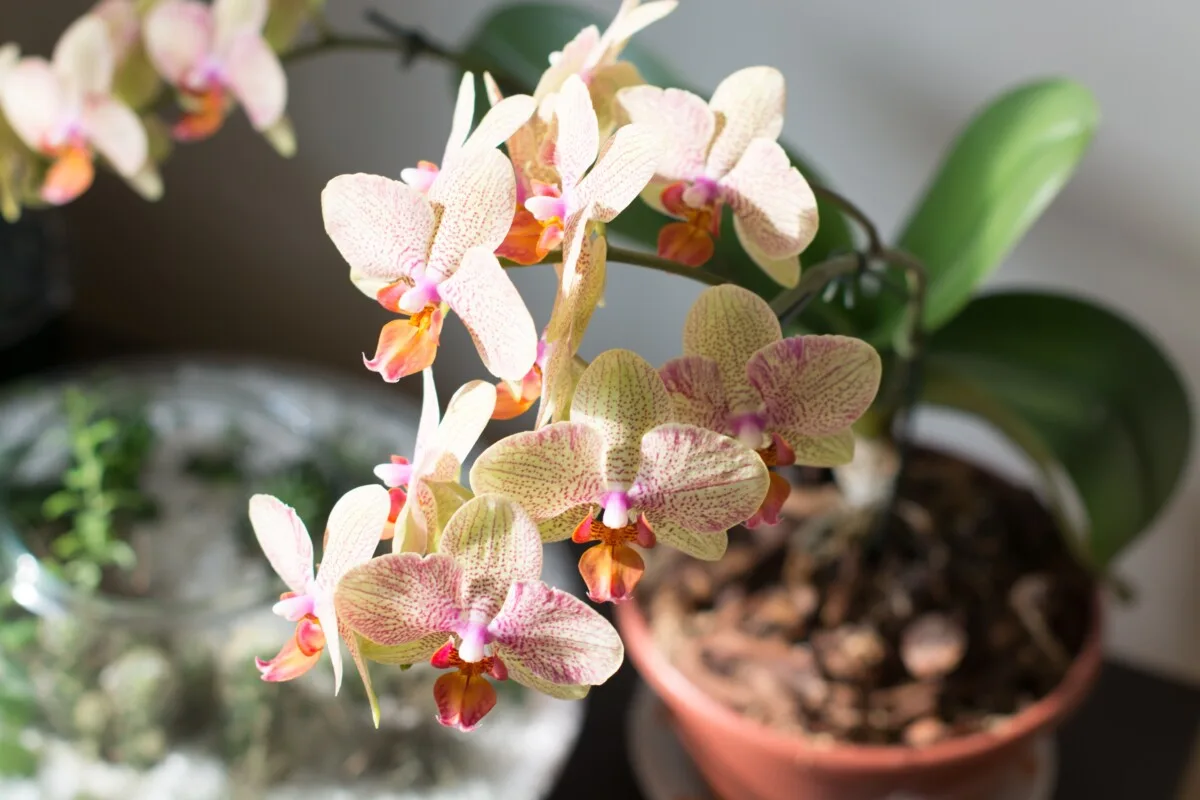
Remember that watering is only a portion of what orchids need to flourish. These are ridiculously sensitive tropical plants that need specific amounts of light, diffused just so, and the proper amount of humidity with the right air temperature. They need just the right amount of nutrients. While it can seem challenging, giving them what they need and having a beautiful, blooming orchid for years isn’t that difficult.
Okay, now that we’ve finally got that sorted, we can turn our energy to more important matters like toilet paper direction – over the top or the bottom? Or how about we tackle pineapple on pizza?

Get the famous Rural Sprout newsletter delivered to your inbox.
Including Sunday ramblings from our editor, Tracey, as well as “What’s Up Wednesday” our roundup of what’s in season and new article updates and alerts.


